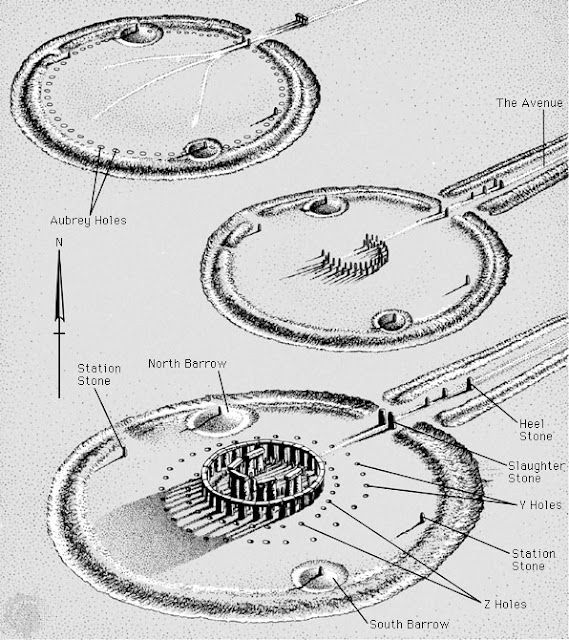
GOOGLE MAPS LINK TO STONEHENGE
Stonehenge is a prehistoric monument in the English county of Wiltshire located in the United Kingdom.
Archaeologists have believed that the iconic stone monument was erected around 2500 BC, as described in the chronology. One recent theory however, has suggested that the first stones were not erected until 2400-2200 BC,[2] whilst another suggests that bluestones may have been erected at the site as early as 3000 BC. The surrounding circular earth bank and ditch, which constitute the earliest phase of the monument, have been dated to about 3100 BC.

There is little or no direct evidence for the construction techniques used by the Stonehenge builders. Over the years, various authors have suggested that supernatural or anachronistic methods were used, usually asserting that the stones were impossible to move otherwise. However, conventional techniques using Neolithic technology have been demonstrably effective at moving and placing stones of a similar size.[16] Proposed functions for the site include usage as an astronomical observatory, or as a religious site.
More recently two major new theories have been proposed. Professor Mike Parker Pearson, head of the Stonehenge Riverside Project, has suggested that Stonehenge was part of a ritual landscape and was joined to Durrington Walls by their corresponding avenues and the River Avon. He suggests that the area around Durrington Walls Henge was a place of the living, whilst Stonehenge was a domain of the dead. A journey along the Avon to reach Stonehenge was part of a ritual passage from life to death, to celebrate past ancestors and the recently deceased.[14] On the other hand, Geoffery Wainwright, president of the Society of Antiquaries of London, and Timothy Darvill of Bournemouth University have suggested that Stonehenge was a place of healing – the primeval equivalent of Lourdes.[17] They argue that this accounts for the high number of burials in the area and for the evidence of trauma deformity in some of the graves. However they do concede that the site was probably multifunctional and used for ancestor worship as well.[18] Isotope analysis indicates that some of the buried individuals were from other regions. A teenage boy buried approximately 1550 BC was raised near the Mediterranean Sea; a metal worker from 2300 BC dubbed the "Amesbury Archer" grew up near the alpine foothills of Germany; and the "Boscombe Bowmen" likely arrived from Wales or Brittany, France.[19]
Whatever religious, mystical or spiritual elements were central to Stonehenge, its design includes a celestial observatory function, which might have allowed prediction of eclipse, solstice, equinox and other celestial events important to a contemporary religion [20]
More recently two major new theories have been proposed. Professor Mike Parker Pearson, head of the Stonehenge Riverside Project, has suggested that Stonehenge was part of a ritual landscape and was joined to Durrington Walls by their corresponding avenues and the River Avon. He suggests that the area around Durrington Walls Henge was a place of the living, whilst Stonehenge was a domain of the dead. A journey along the Avon to reach Stonehenge was part of a ritual passage from life to death, to celebrate past ancestors and the recently deceased.[14] On the other hand, Geoffery Wainwright, president of the Society of Antiquaries of London, and Timothy Darvill of Bournemouth University have suggested that Stonehenge was a place of healing – the primeval equivalent of Lourdes.[17] They argue that this accounts for the high number of burials in the area and for the evidence of trauma deformity in some of the graves. However they do concede that the site was probably multifunctional and used for ancestor worship as well.[18] Isotope analysis indicates that some of the buried individuals were from other regions. A teenage boy buried approximately 1550 BC was raised near the Mediterranean Sea; a metal worker from 2300 BC dubbed the "Amesbury Archer" grew up near the alpine foothills of Germany; and the "Boscombe Bowmen" likely arrived from Wales or Brittany, France.[19]
Whatever religious, mystical or spiritual elements were central to Stonehenge, its design includes a celestial observatory function, which might have allowed prediction of eclipse, solstice, equinox and other celestial events important to a contemporary religion [20]
Archaeological evidence found by the Stonehenge Riverside Project in 2008 indicates that Stonehenge served as a burial ground from its earliest beginnings.[5] The dating of cremated remains found on the site indicate burials from as early as 3000 BC, when the initial ditch and bank were first dug. Burials continued at Stonehenge for at least another 500 years
Stonehenge evolved in several construction phases spanning at least 1500 years. There is evidence of large-scale construction on and around the monument that perhaps extends the landscape's time frame to 6500 years. Dating and understanding the various phases of activity is complicated by disturbance of the natural chalk by periglacial effects and animal burrowing, poor quality early excavation records, and a lack of accurate, scientifically verified dates. The modern phasing most generally agreed to by archaeologists is detailed below. Features mentioned in the text are numbered and shown on the plan, right.[citation needed]
http://en.wikipedia.org/wiki/Stonehenge
A prehistoric village has been discovered in southern England that was likely home to the builders of Stonehenge, archaeologists announced on January 30, 2007 (read the full story).
The village, located 1.75 miles (2.8 kilometers) from the famous stone circle, includes eight wooden houses dated back to around 2500 B.C.
The remains of a cluster of homes include the outlines of floors, beds, and cupboards. Tools, jewelry, pottery, and human and animal bones were also found.
The excavated houses formed part of a much bigger settlement dating back to the Late Stone Age, according to project leader Mike Parker Pearson of England's Sheffield University.
"We could have many hundreds of houses here," Parker Pearson added. "Our dates for the building of Stonehenge are identical to the dates for this very large settlement."
The village stood next to a newly revealed stone avenue, partly visible in the excavation ditch at top right, which once led from a large timber circle to the nearby River Avon.
The site was excavated in 2006 as part of the Stonehenge Riverside Project.

http://news.nationalgeographic.com/news/2007/01/photogalleries/stonehenge/
A U.S. researcher suggests that the architects of Stonehenge were inspired by magical "auditory illusions" the stones could produce, according to a Live Science report.
Steven Waller, a researcher who specializes in the sound properties of ancient sites, is challenging common Stonehenge theories that the site was intended for spiritual worship and ceremonial burials.
He suggests that the stones were arranged to create a special sound phenomena that baffled participants of ritual piper dancing, and they may have thought the effect was supernatural.
Read more: http://www.nydailynews.com/news/world/stonehenge-mystery-solved-scientist-designed-acoustic-phenomenon-article-1.1024709#ixzz1mzDeVtD2
http://www.activemind.com/Mysterious/Topics/stonehenge/
http://en.wikipedia.org/wiki/Stonehenge
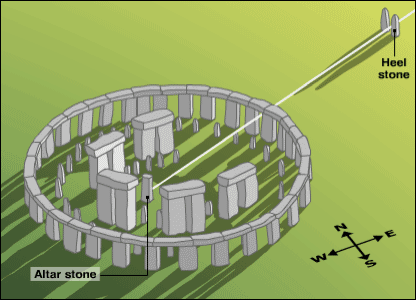
http://www.soulsofdistortion.nl/Summer%20Solstice%20Galactic%20Alignment.html

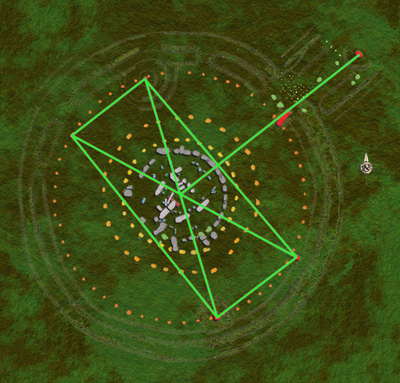
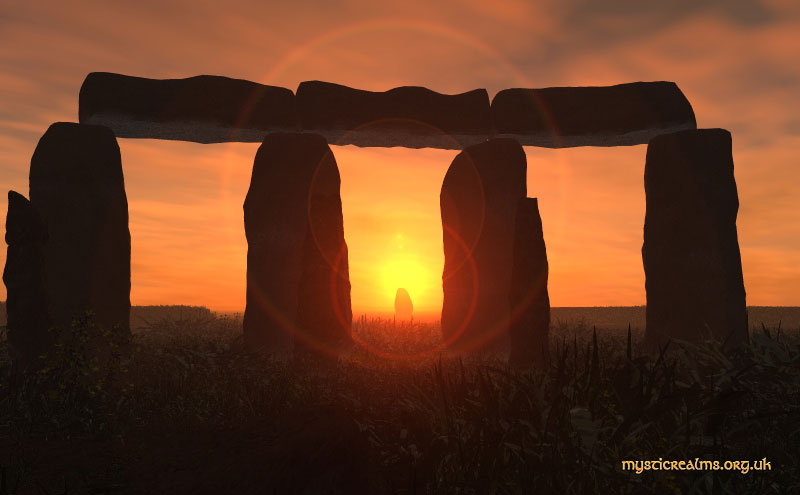
http://www.lundyisleofavalon.co.uk/stonehenge/stnpik05.html

Archaeologists working near Stonehenge have uncovered what they believe is the largest Neolithic settlement ever discovered in Northern Europe.
Remains of an estimated 300 houses are thought to survive under earthworks 3km (2 miles) from the famous stone rings, and 10 have been excavated so far.
But there could have been double that total according to the archaeologist leading the work.
"What is really exciting is realising just how big the village for the Stonehenge builders was," says Professor Mike Parker Pearson of Sheffield University.
http://news.bbc.co.uk/2/hi/science/nature/7078578.stm
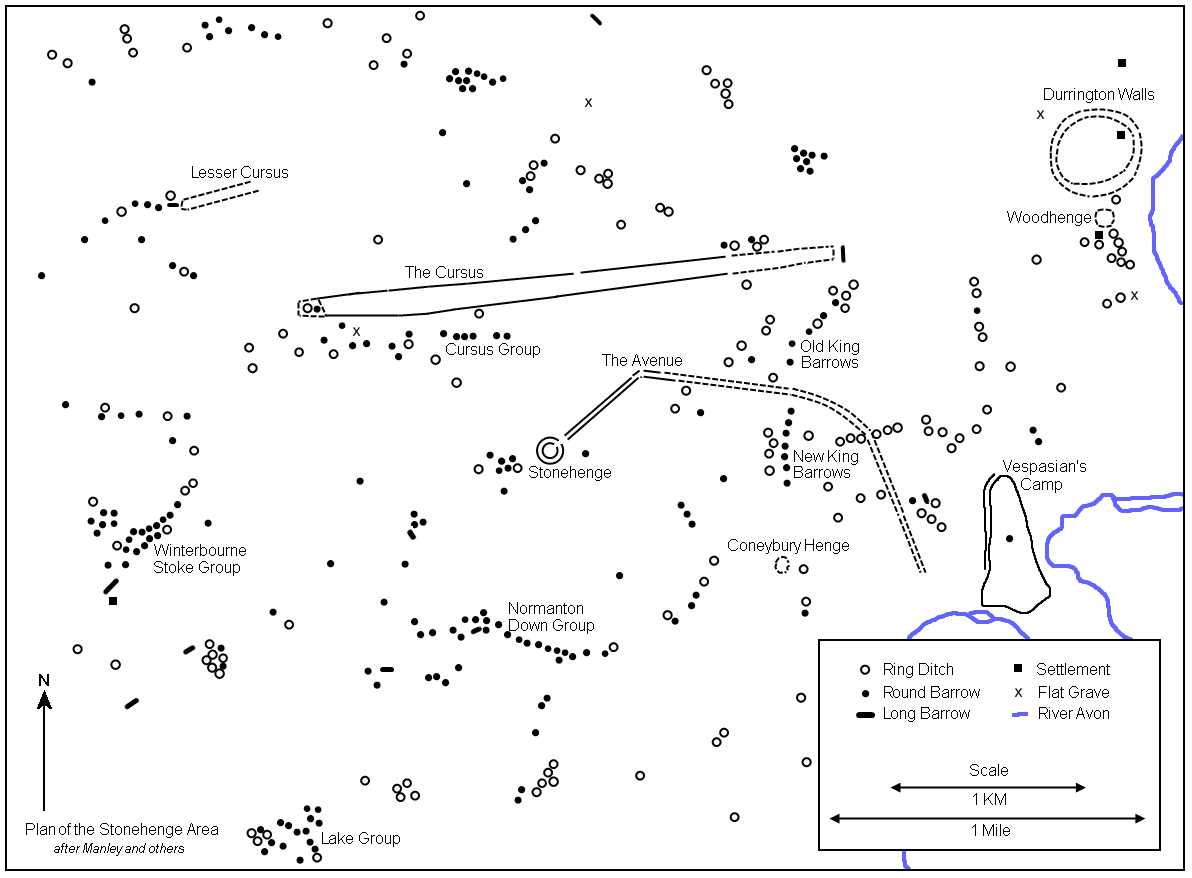
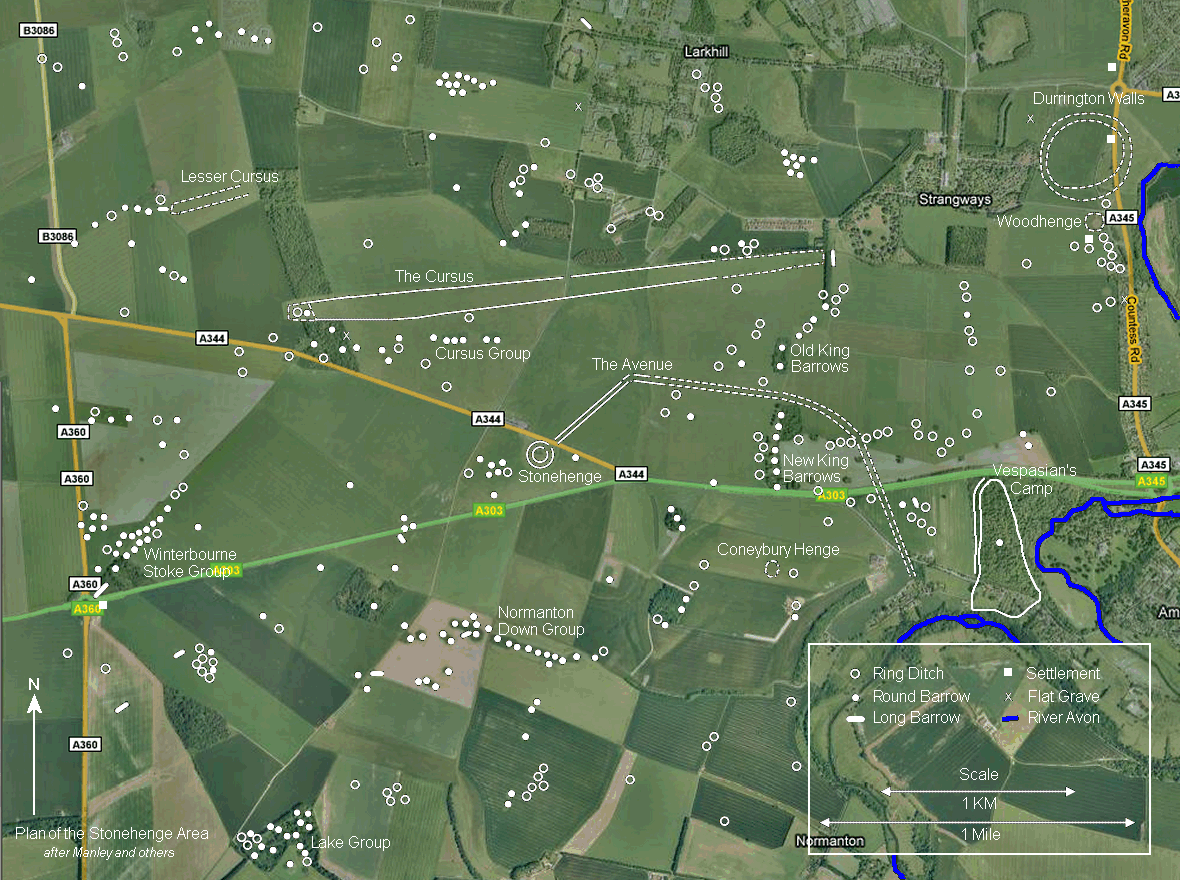
http://www.stone-circles.org.uk/stone/stonehenge.htm

http://news.nationalgeographic.com/news/2010/07/photogalleries/100723-stonehenge-woodhenge-twin-timber-circle-science-pictures/

Stonehenge as photographed from a balloon belonging to the Royal Engineers in 1906, probably September, by 2nd Lt PH Sharpe. Courtesy Society of Antiquaries.
http://www.english-heritage.org.uk/professional/research/landscapes-and-areas/national-mapping-programme/stonehenge-whs-nmp/
Stonehenge (Wilts.) is the best-known archaeological site in the British Isles. It is spectacular, but what survives is but the ruin of the final phase of a structure dating from c.4000 to c.1500 BC. The monument was orientated to mark sunrise at the midsummer solstice (and sunset at the midwinter solstice), but whether it has further astronomical significance is debatable.
Read more: http://www.answers.com/topic/stonehenge#ixzz1ysphfXFK
Steven Waller, a researcher who specializes in the sound properties of ancient sites, is challenging common Stonehenge theories that the site was intended for spiritual worship and ceremonial burials.
He suggests that the stones were arranged to create a special sound phenomena that baffled participants of ritual piper dancing, and they may have thought the effect was supernatural.
Read more: http://www.nydailynews.com/news/world/stonehenge-mystery-solved-scientist-designed-acoustic-phenomenon-article-1.1024709#ixzz1mzDeVtD2
http://www.activemind.com/Mysterious/Topics/stonehenge/
http://en.wikipedia.org/wiki/Stonehenge

There are four major celestial conjunctions in Plato’s Great Year (25920 years) that were of interest to the ancients since they divide the Great Year into four epochs or Great Ages of 6480 years each.
In the paper ‘Crucifying the Earth on the Galactic Cross’ (Smelyakov, Wicherink 2006) these four extremely rare celestial conjunctions in a Great Year were called the Great Celestial Conjunctions (GCC). These Great Celestial Conjunctions coincide with the moments in the precession cycle that the Earth Cross of the Zodiac aligns with the Galactic Cross of the Solar Zodiac.
A Great Celestial Conjunction coincides with the Sun aligning with the Galactic Equator at solstices or equinoxes. There are two places on the ecliptic where the Sun can align with the Galactic Equator since the ecliptic crosses the Milky Way at two places and hence we discern two different types of galactic alignments in a Great Year:
http://www.soulsofdistortion.nl/Summer%20Solstice%20Galactic%20Alignment.html



http://www.lundyisleofavalon.co.uk/stonehenge/stnpik05.html

Archaeologists working near Stonehenge have uncovered what they believe is the largest Neolithic settlement ever discovered in Northern Europe.
Remains of an estimated 300 houses are thought to survive under earthworks 3km (2 miles) from the famous stone rings, and 10 have been excavated so far.
But there could have been double that total according to the archaeologist leading the work.
"What is really exciting is realising just how big the village for the Stonehenge builders was," says Professor Mike Parker Pearson of Sheffield University.
http://news.bbc.co.uk/2/hi/science/nature/7078578.stm


http://www.stone-circles.org.uk/stone/stonehenge.htm

http://news.nationalgeographic.com/news/2010/07/photogalleries/100723-stonehenge-woodhenge-twin-timber-circle-science-pictures/
Stonehenge as photographed from a balloon belonging to the Royal Engineers in 1906, probably September, by 2nd Lt PH Sharpe. Courtesy Society of Antiquaries.
http://www.english-heritage.org.uk/professional/research/landscapes-and-areas/national-mapping-programme/stonehenge-whs-nmp/
Stonehenge (Wilts.) is the best-known archaeological site in the British Isles. It is spectacular, but what survives is but the ruin of the final phase of a structure dating from c.4000 to c.1500 BC. The monument was orientated to mark sunrise at the midsummer solstice (and sunset at the midwinter solstice), but whether it has further astronomical significance is debatable.
Read more: http://www.answers.com/topic/stonehenge#ixzz1ysphfXFK





